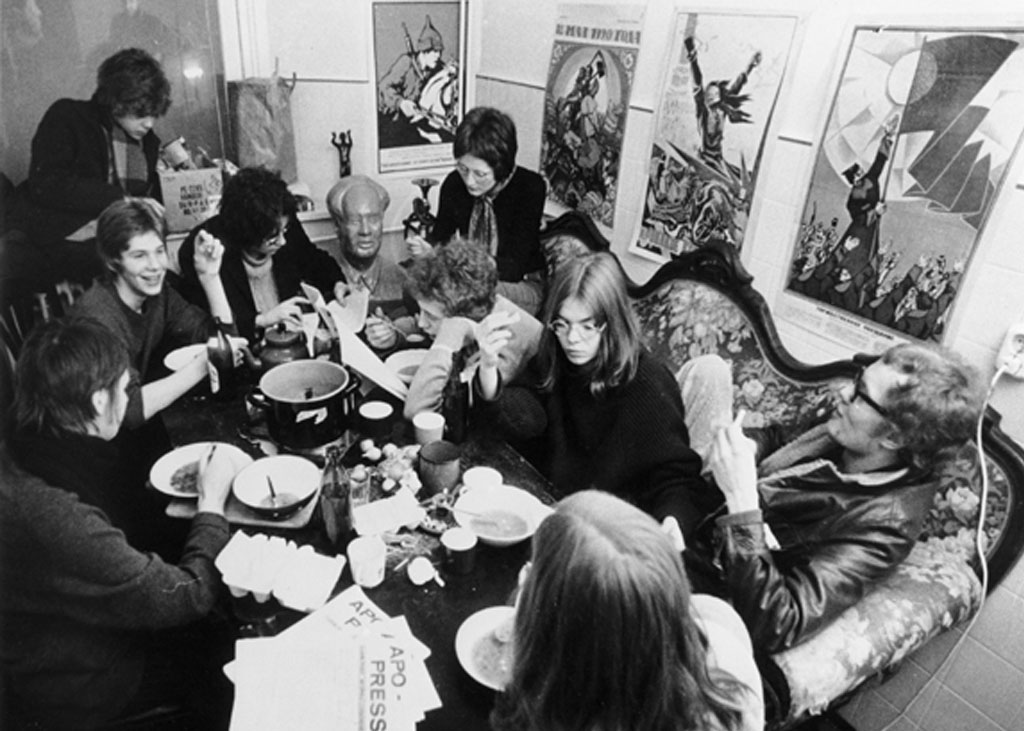30-10-12 // COMMUNAL URBANISM

Meal in a Political Commune (1968)
©Bildarchiv Preußischer Kulturbesitz, Photo credit: Günter Zint
Communal Urbanism
By Bernd Upmeyer
One of the most fascinating things we at MONU recently experienced during a trip to Brasilia had nothing to do with its famous Oscar Niemeyer monuments or the city itself, but with the context surrounding the city. After two tiring days in the city and having read in a guidebook that in certain regions around Brasilia extra-terrestrial contacts are supposed to be more likely, which provoked the emergence of a number of cults and communes, we decided to rent a car to visit those places. We headed around 50km to the east and ended up in the so-called “Vale do Amanhecer” – the “Valley of the Dawn”. What we found was a small town full of cult worshippers and so-called “mediums” wearing special robes in extremely bright colours who were considered the reincarnation of extra-terrestrial giants. But despite all the strangeness we witnessed a desperate need for community, collectiveness and a strong desire to live an alternative life sharing things among each other. Back in Europe we saw such a desire for a communal life recently reappear in several newly founded, contemporary communal housing projects in cities in Western Europe, whether in East-Berlin or Vienna to name but a few, but probably in other parts of the continent too.”
But today, communes or communal housing projects have – obviously – very little to do with the famous communes of the past and certainly not with those of the 1960s such as the Kommune 1 in Berlin, the Kibbutzim in Israel, the pre-Soviet and Soviet communities, or the American “back-to-the-land” ventures. Today, communes or communal housing projects probably appear to be by far less naïve than in the past, more pragmatic and economic, better organized, and built up around serious and professional financial strategies. Furthermore, in a globalized world, communal living seems to be as diverse as our society is in general, bringing up all kinds of forms such as “Alternative-family communities”, “Cooperative communities”, “Countercultural communities”, “Religious communities”, “Spiritual communities”, or “Experimental communities”, etc., etc..
This new issue of MONU aims to focus on contemporary communal living in cities in general and on contemporary communal housing projects in particular. Nevertheless, we are interested in the history of communal housing and communal living in general as well, whether in the Western world or anywhere else. The key questions we aim to answer are: what does communal housing look like today? What are the spatial requirements and how do they appear in cities spatially and formally? What kind of new typologies do they produce? What are the intentions and motivations of the people living in those contemporary communities? What is their economic base and how do they deal with issues such as property and rent? How do people organize themselves and deal with possessions and resources in general? How important is work and income within those contemporary collectives? What role does spirituality play in those communities? How is the common interest shared? What kind of people live in such projects? And where will it all lead to eventually?
Title: Communal Urbanism
Author: Bernd Upmeyer
Date: October 2012
Type: Call For Submissions for MONU
Publications: MONU – Magazine on Urbanism
Location: Rotterdam, The Netherlands